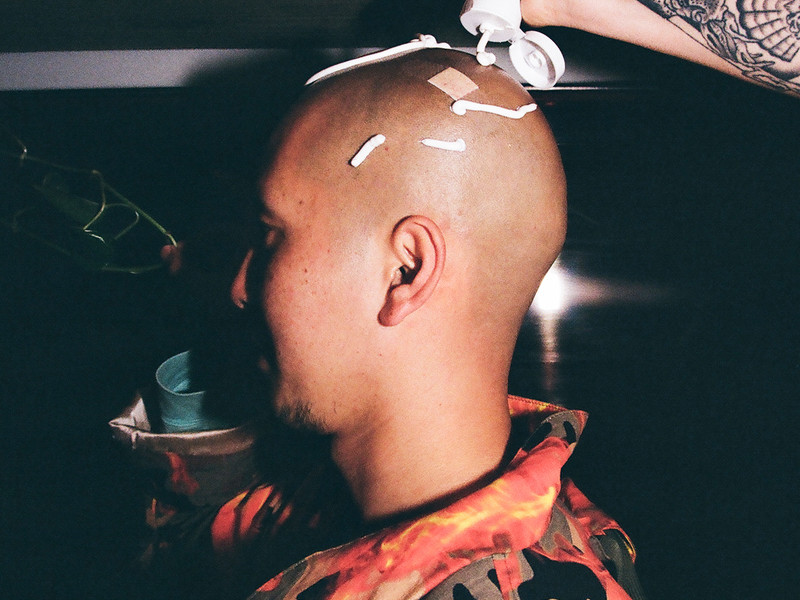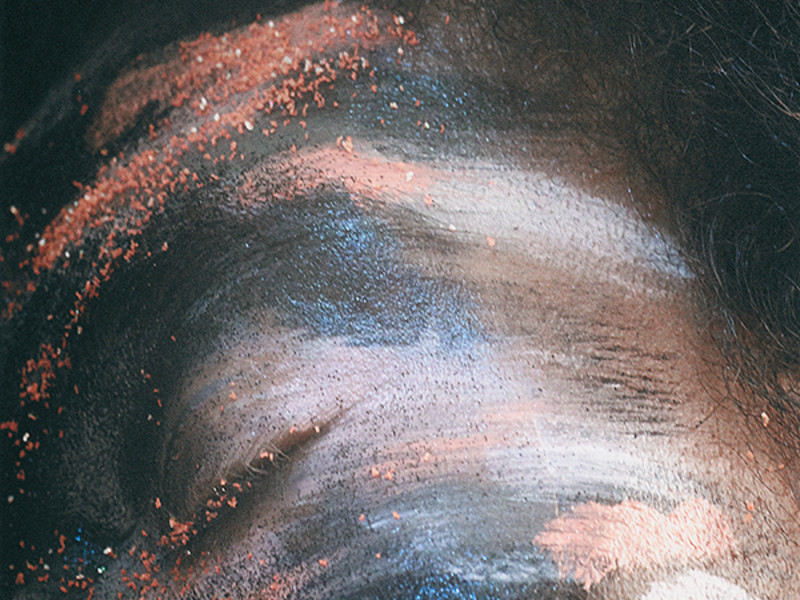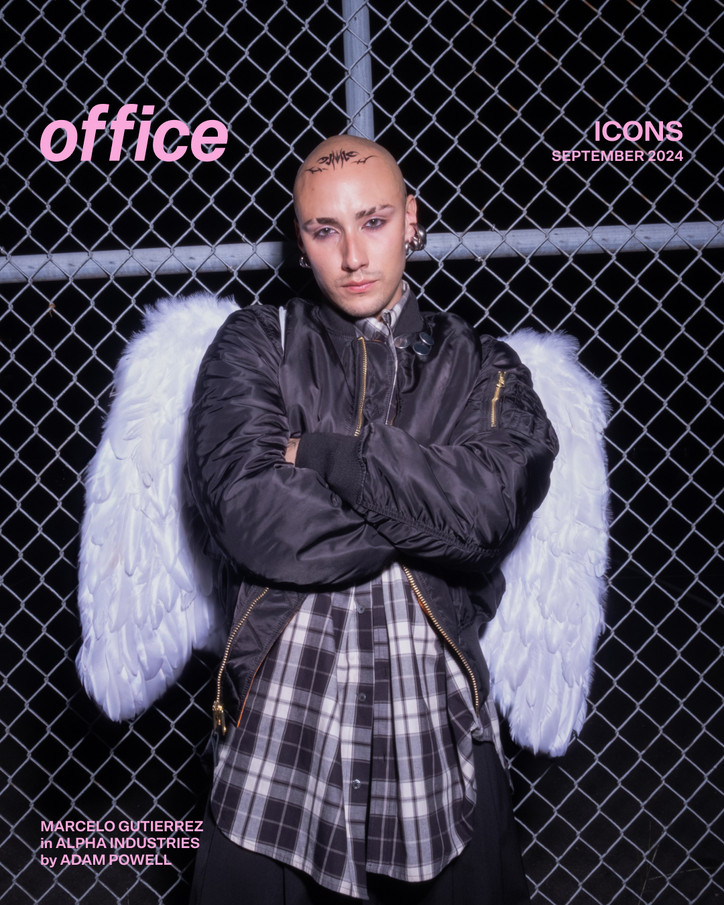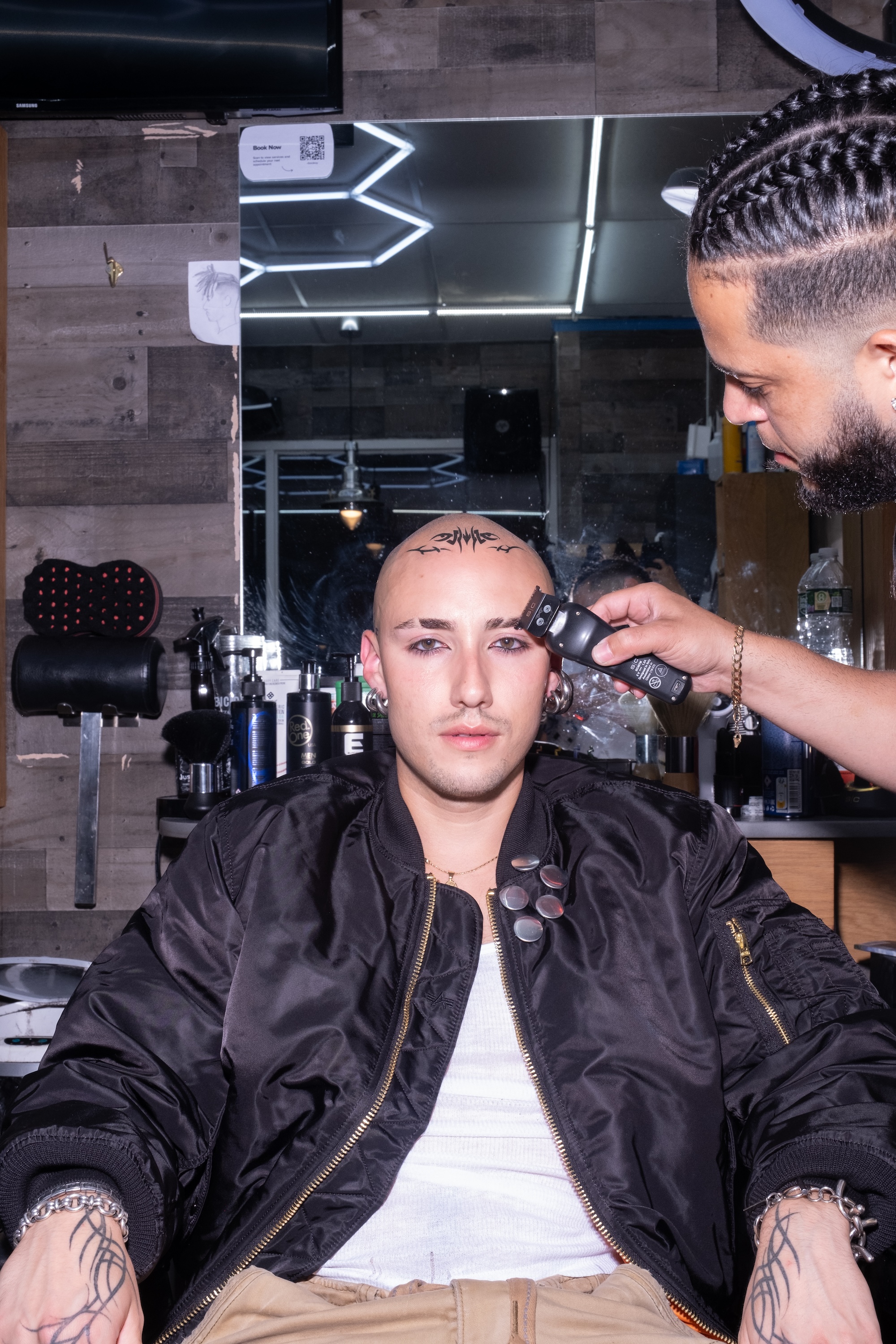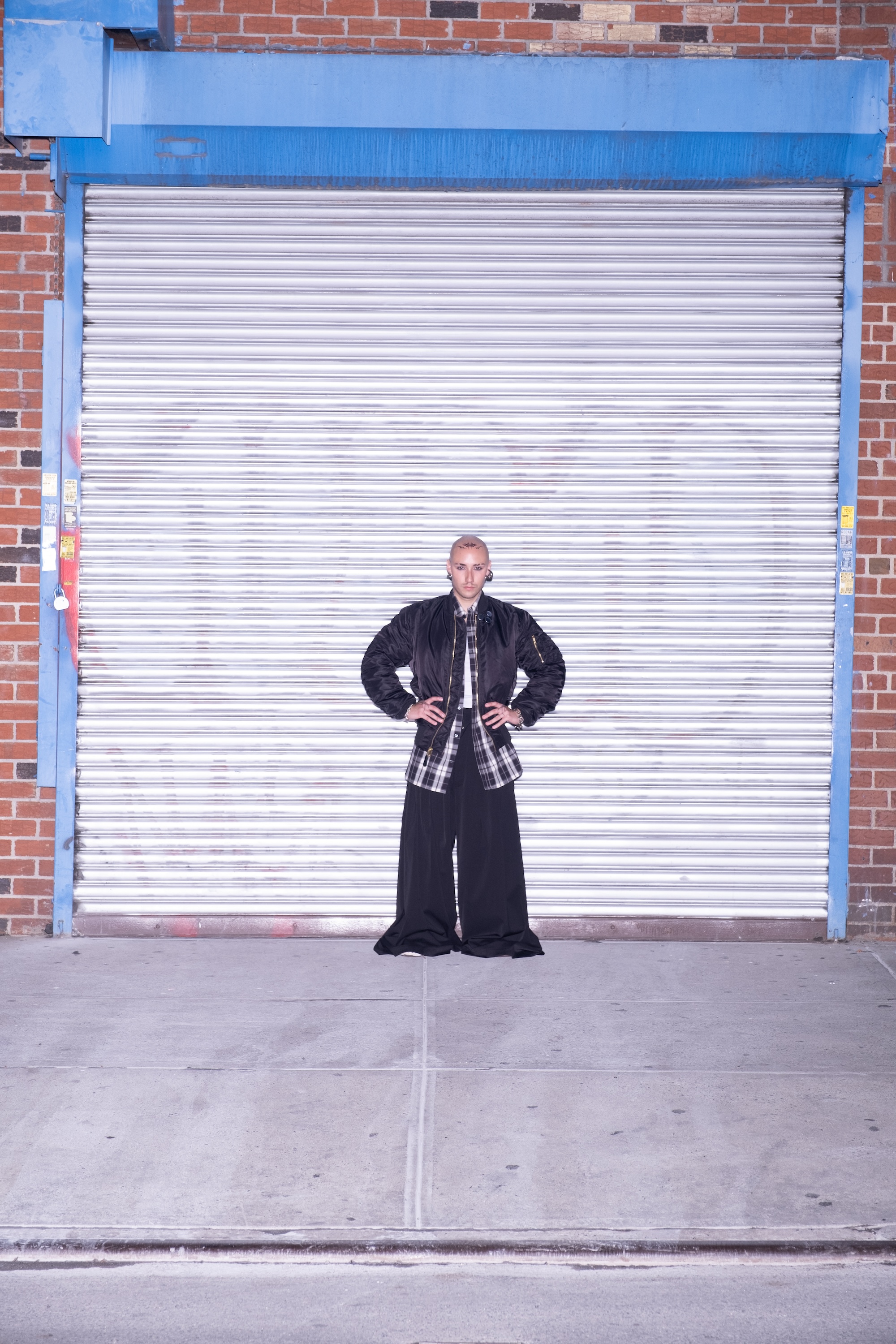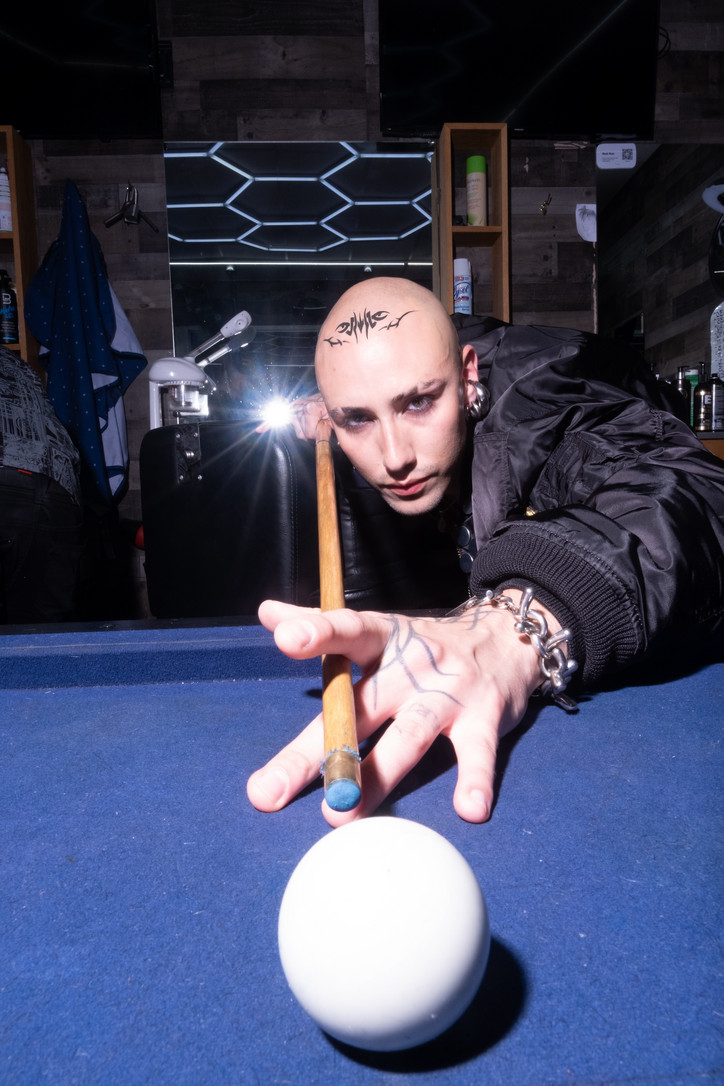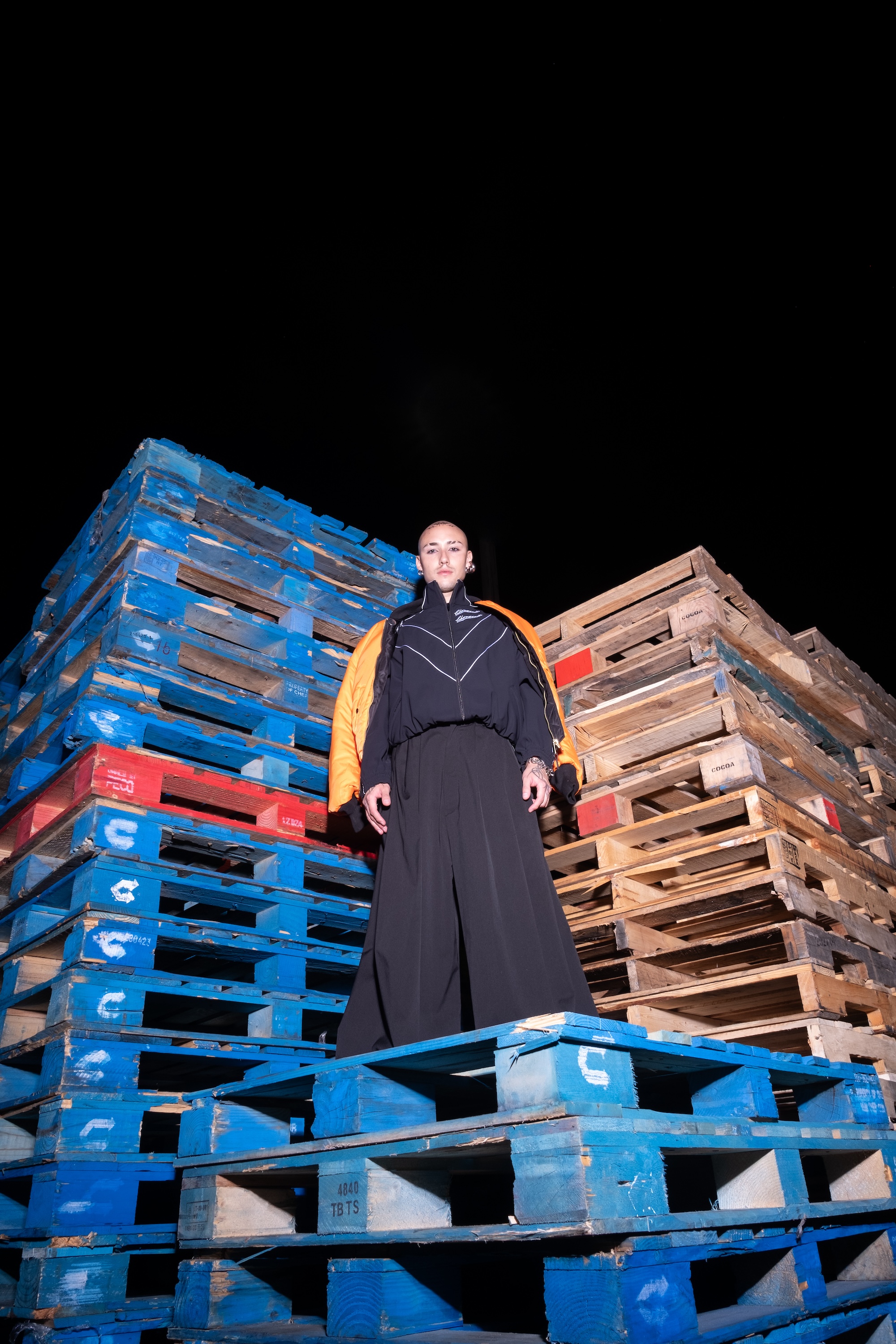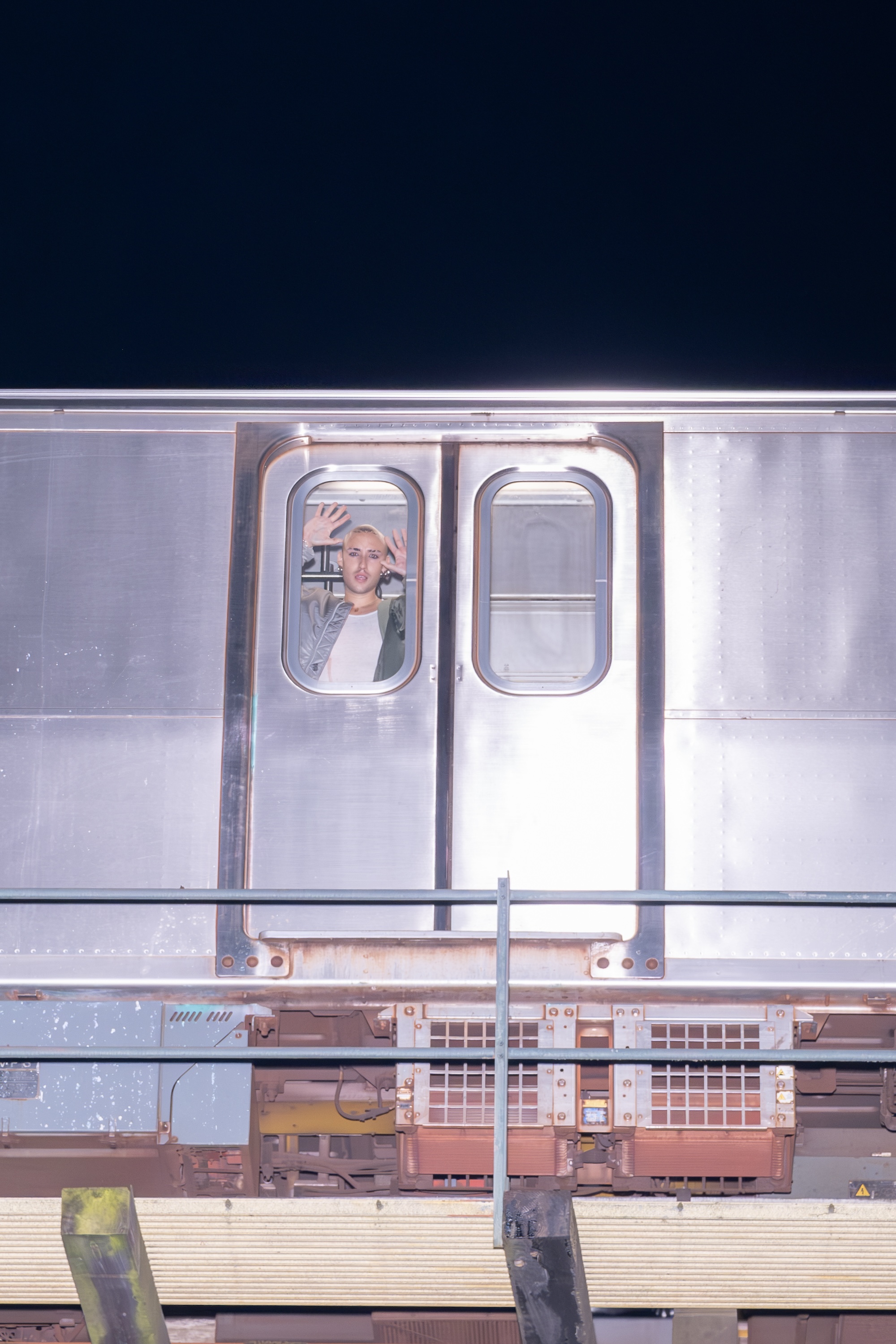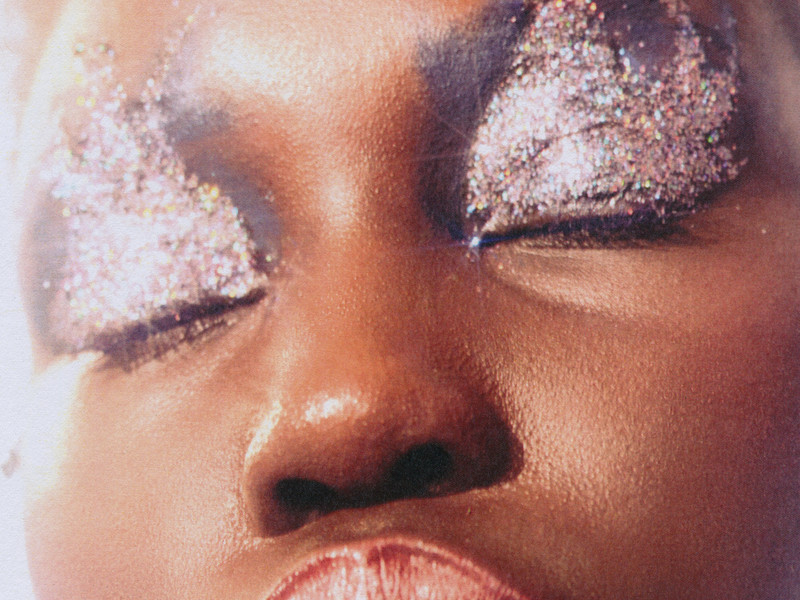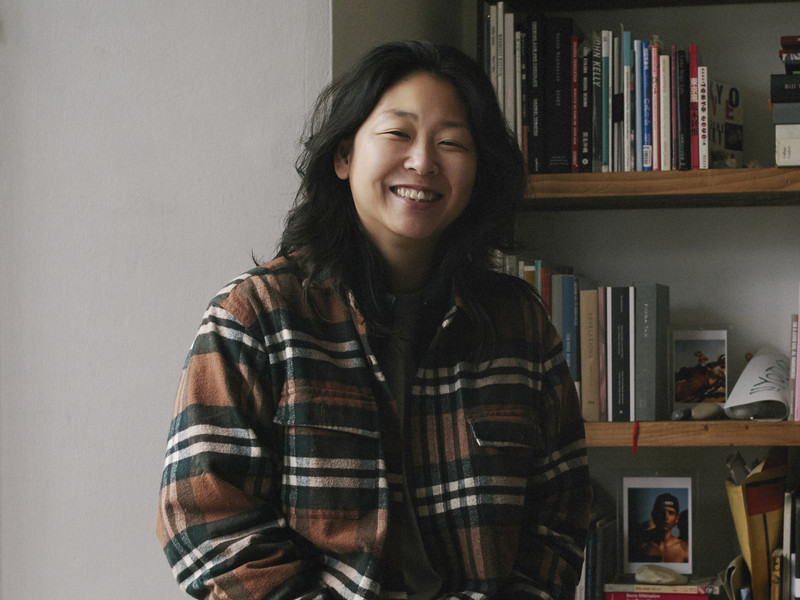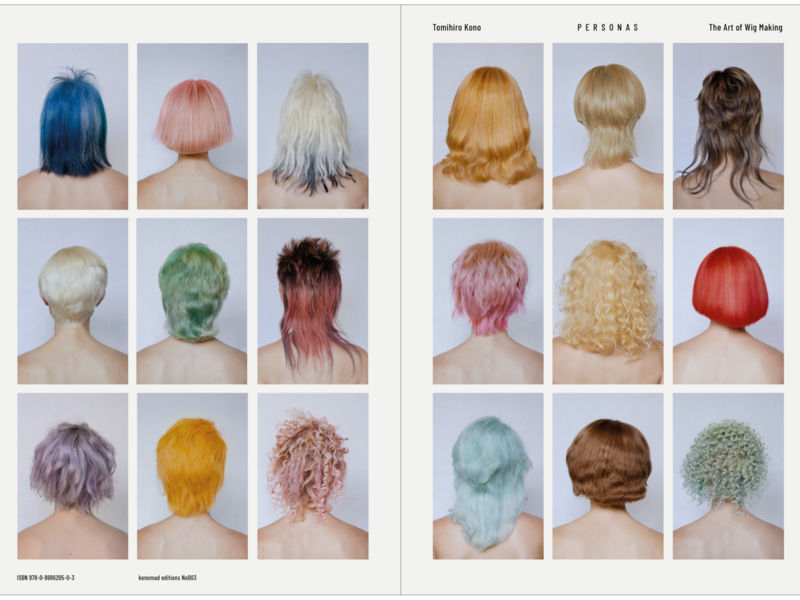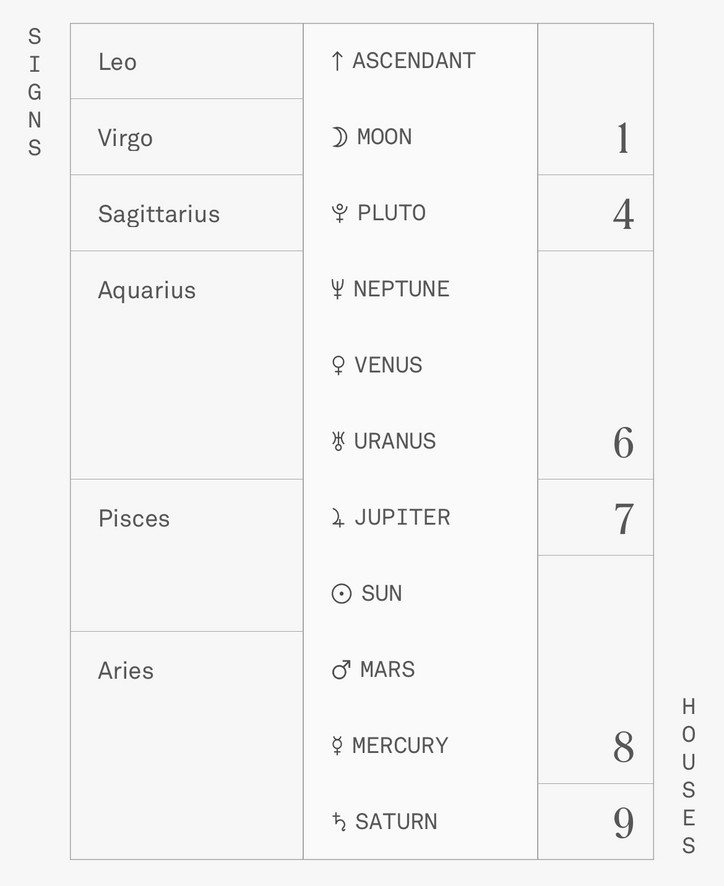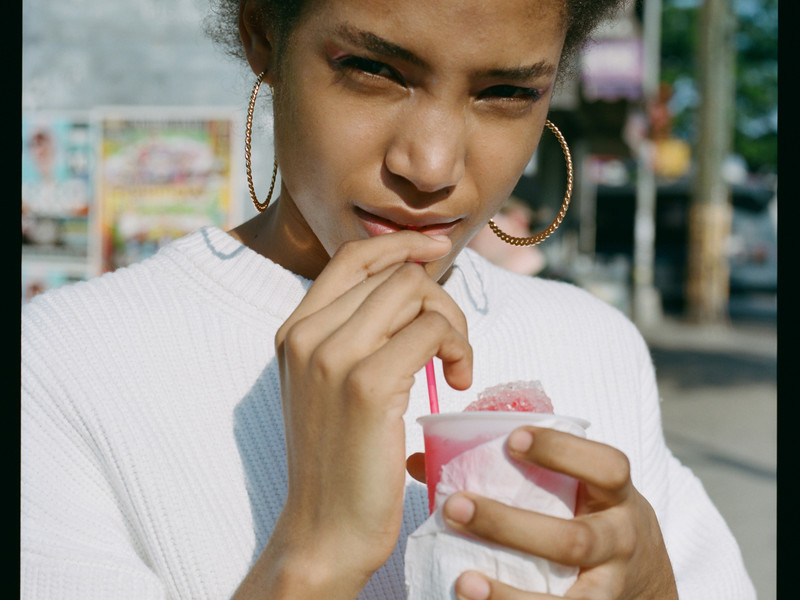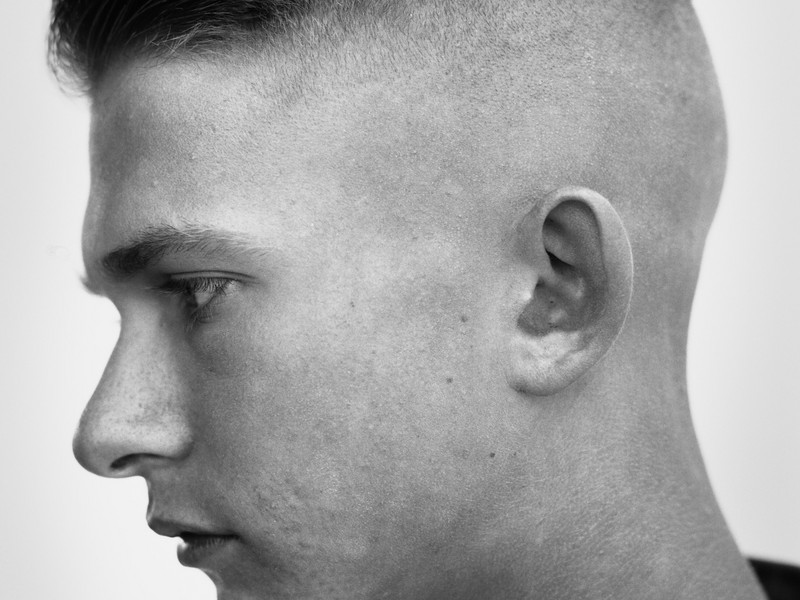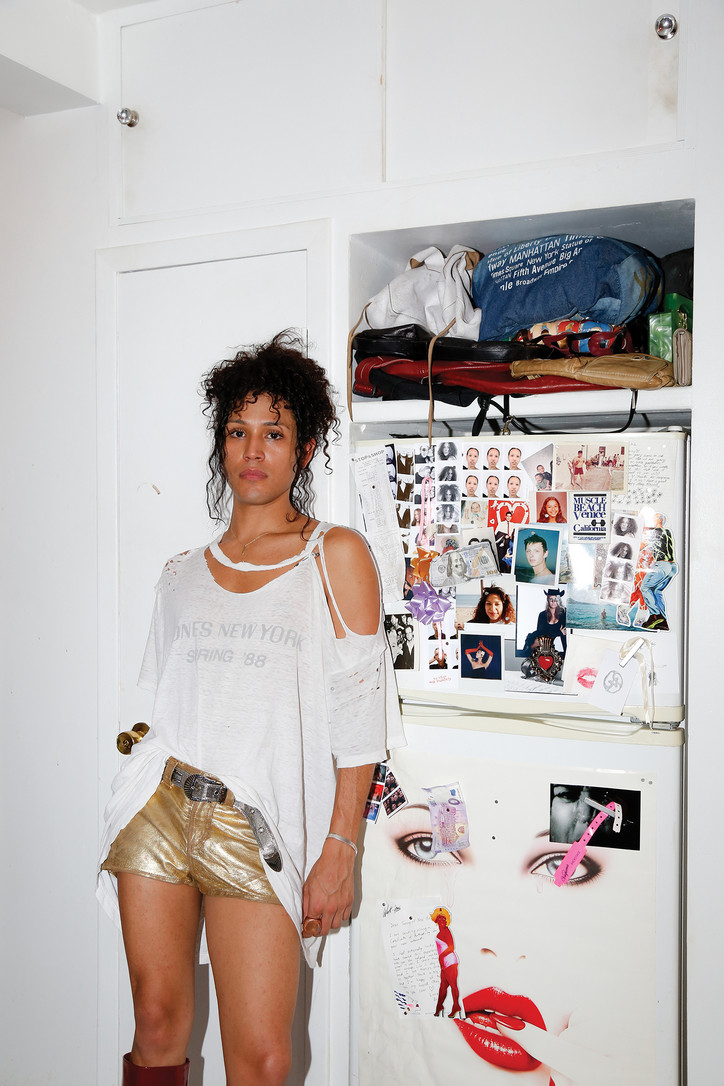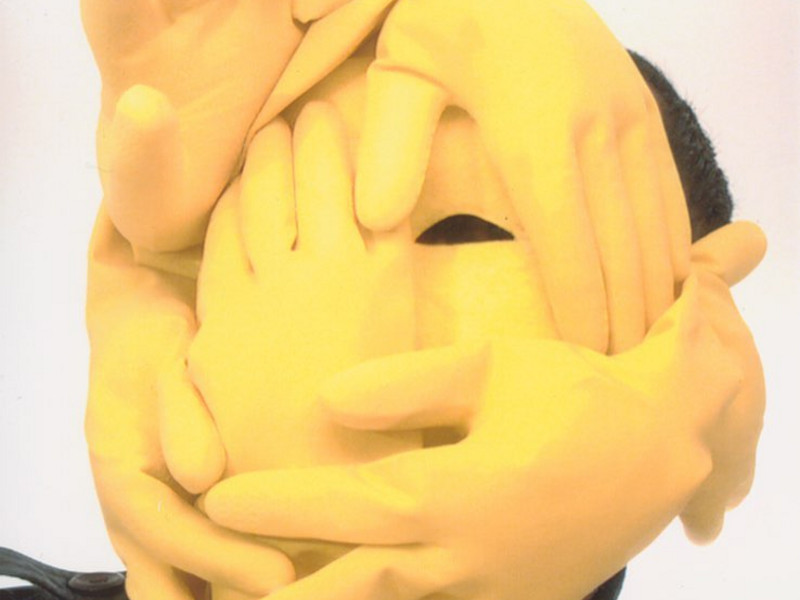New Population
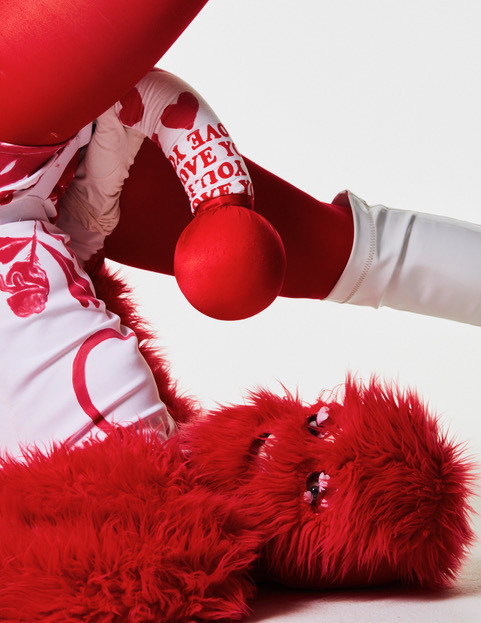
In inflatable red and white costumes, these surrealist characters are slowly taking over the underground scene in Stockholm with a project that merges different disciplines to create something we've never seen or heard of.
With the slogan, "Not Art Not Music Not Fashion Not Performance," it can be hard to define exactly what Grebnellaw is. But office sat down with the brains behind the operation to learn more.
Tell me a little about yourself—how did you become a performance artist?
I think by accident. I started out making music because it was always easy to find dancers but there was always problems finding musicians who wanted to play. Then it gets a little bit more complicated than that because I’m also a visual artist and I wanted to create. So, basically what I did was that I planted the ‘New Population’. Grebnellaw for me is a population and it’s a performance art project. Really, I play God and I create these beings—I just want to have millions of them everywhere. We are very far from that right now, but maybe the technology will help us somehow in the future.
Is that the concept behind your creation of the ‘New Population?'
Yes exactly, those were the first ones that I did. Now I make the Grebnellaw characters red and white but basically it was just because I was a little bit lost in my own creation. Everything was all over the place and I needed to have something that brought everything together. So, I was noticing that a lot of things were actually red and white and I needed something—You know when you go into a place and there are just so many choices and it’s just overwhelming—I just wanted to reduce the options and make it more easy. I stock to red and white and I’m coherent with that because everything else is not. The people who perform with me can do whatever they want on stage, I don’t care as long as they wear red and white.
So, you don’t prepare a specific dance for each performance?
They have their own practise. The Grebnellaw’s can be dancers or performance artists but they have their own practice. I try to give them a space where—I mean this is so cliche because no one is really free—but I think I give them the freedom to do whatever they want. If freedom is possible.
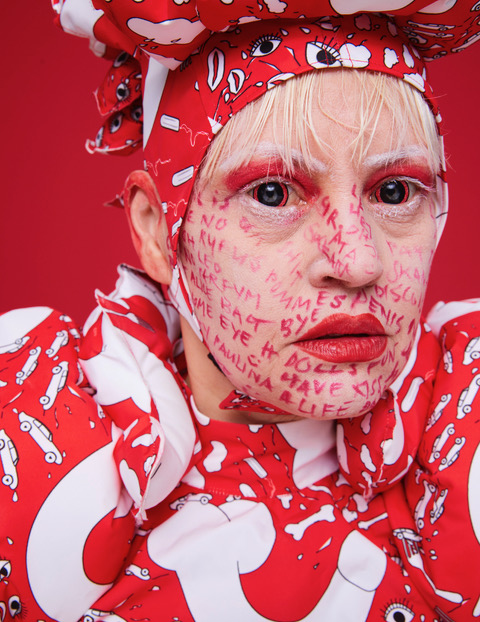
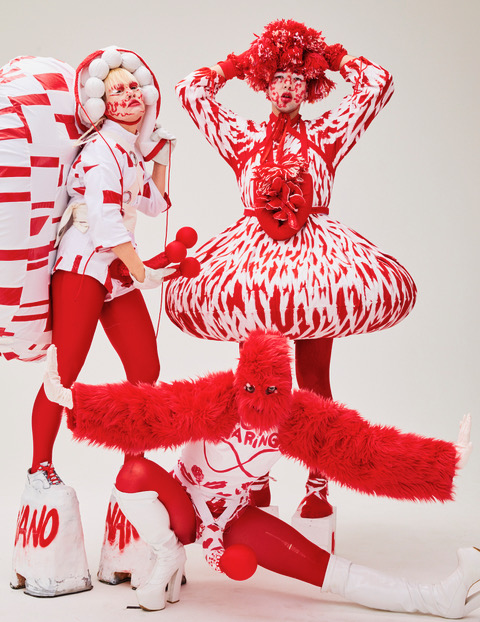
Do you always perform together as a group?
Yes, but it’s always different people. There are people who have performed with me for quite some time now, but the way it all happened was actually a self creation, I didn't create it myself. I just did it towards some people and then they came to me and said that they wanted to be a part of it the next time. Then the whole thing continued growing and more creative people with different skill sets joined. Then I started to make more costumes because that was the way to become a part for it.
What goes into the process of creating your costumes?
I’m just really obsessed with inflatable things and I really like the feeling of being big and powerful and take a lot of space. I imagine preparing to be in outer space or even in subatomic space inside atoms with a soft armor around you that makes it possible to float on water. Sometimes, I also perform almost naked. I’m either half naked or I’m just completely inflated—not so much in between.
So, you dress after how you feel that particular day?
It’s just a feeling you have. Today I want to be naked or I want to be inflated. I think the official costume is almost like a uniform. So, in the performance somebody always has to wear the inflated costume or else it’s not a proper performance.
What are you trying to express through your art?
It’s almost like a fertility ritual. I have a narrative about us coming from subatomic space and a seed. But the seed is also a subatomic particle and it’s also sperm because all of those three things are kind of linked. So really, what I do is that I just want to give birth to my population like in a fertility ritual where you dance to have a nice offspring. You dance and the seed sprout and gives birth to new plants and forms and beings.
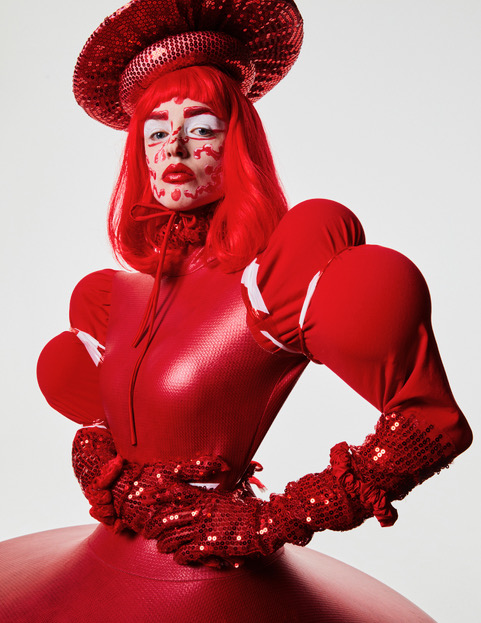
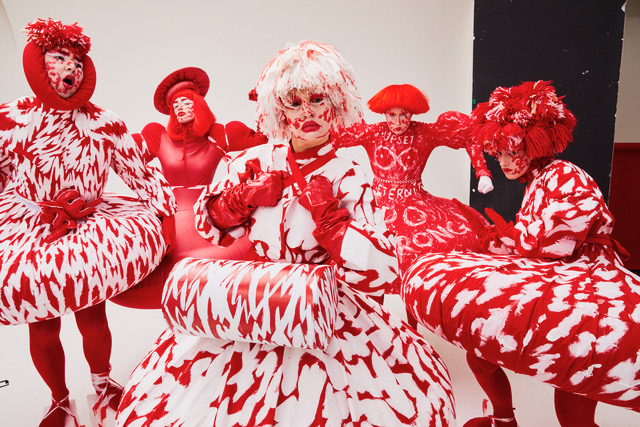
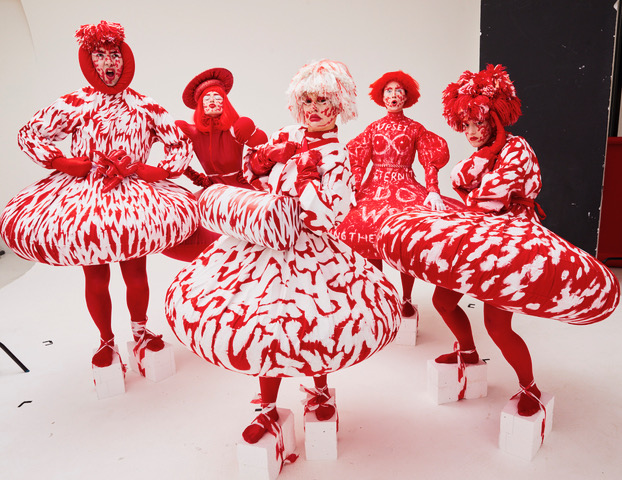
So, that’s how you would define what you do, if it’s possible to define?
I think so yes. It’s a fertility ritual so that the cosmic seed will sprout and give birth to new things. But it’s also linked to nanotechnology. You know, in supertonic particles in nanotechnology there’s a lot of hope for mankind. Because when we build with these elements, we can create new materials. Even potentially have air filters that can soak up smoke or pollution. I’m not saying this is now but I think it’s a world that is unexplored. I think that there could be solutions to our problems.
Would you say that your work addresses contemporary issues in society—if so, what’s the message you are trying to send?
I don’t think that is actually that. I think it’s about something else, but I’m not really sure—maybe I should go to therapy. No, I think if I knew what it was maybe I wouldn't be doing it. Maybe I’m doing it to find out exactly why. It’s not something I can really say. It’s like when I was a child I didn’t have one imaginary friend, I wanted to have many, not just one but 100.000 of them. But it’s a little bit like imaginary friends. It has been with me always.
Where do you usually perform?
I would say it’s quite underground. When you think about Stockholm, you think of a clean and minimalistic city where everybody is well behaved—that’s a little bit true. I haven’t been traveling for a year but usually I’m travelling a lot and I have been in Asia. Outside of Sweden I kind of feel a little bit more home. At the same time it’s a crazy thought, I live here so I should be able to do something. But here in Stockholm I mostly stay underground but I also perform at bigger things such as galleries and museums. I like another type of feeling from my performance, so at our performances we always come out as a surprise. Sometimes it says my name but we always appear out of nowhere. I don’t like too much to be on stage, I like to be straight on the floor.
I guess it also the thrill of the unexpected.
Yes I think so. I wouldn't think it was fun if someone had to introduce us. I like to just come out do my thing and sort of leave. When we perform in clubs you can really get the feeling that you are immersed with your audience in a way that you can’t have in a theater—there’s no expectations.
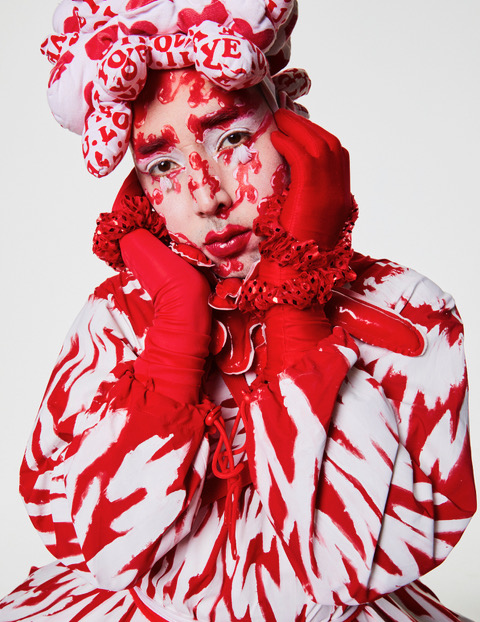

How does performance art connect with your personality?
I think, for me it’s a lot of organization really. Which I don’t know if i’m actually so good at. I love to be around people and I love to collaborate. I think collaboration is probably one of the best inventions. It’s always fun.
What’s your source of inspiration?
I have so many. I’m inspired by science, my friends and virtual.
Who’s the first person that comes to mind?
Oskar Schlemmer! He was a costume designer from Bauhaus and he made an oprah called the Triadic Ballet in 1922 with very amazing costumes. He was also a big inspiration on Leigh Bowery who was a big inspiration to the Tranimal drag movement. I’m also a big part of the drag scene here in Stockholm. We don’t have a big drag world, but together with two others I organized the International Drag Festival called STOCKWIG which was initiated by DJ, George Chamoun. We filled up a very big venue which was amazing, I couldn’t believe that it could happen in Stockholm. There was so many people who came from all over the place because we had the euro pride here. We also did a big new year’s eve party and we will do a big festival this summer, as well.
Can you walk me through your creative process combining the elements of art, pop music and performative elements. How does it come together?
I’m going to do a performance soon where we are going to be nine people in a space in the meatpacking district at a venue that kind of looks like a church. To this, I have a violinist, and I have four people who we are making into otherworldly type of Grebnellaws—and then we are going to do it all live. So, the dressing is not going to happen before, it’s going to happen during the performance where they will create each other directly on the floor. We are going to build each other. I always sing at the performances. I produce the music. I write all songs, but I never release the material. I have written so many songs, but I work in a more site specific way so I change the songs all the time. Like gabber music which goes from 300 bpm and up—so it goes so fast that I can barely sing it. But it makes it very crazy.
It’s not like that all the time, but with this performance I took a song that was slow and made it very fast. So, I change my songs all the time which I also do with everything else. There is never a point where I go like ‘ok now I am going to sit down and make an EP’— I’m always performing live. That’s what I like to do. So I have a lot of songs, but you actually have to come to the performance to hear it, because you can’t hear it anywhere else. Everything is unique. It’s always one time and it will never be repeated the same way. You can’t say if it’s good or bad. Sometimes it’s good sometimes it’s bad, it depends who is on stage and how everything came together at that time. You don’t know exactly what's going to happen.
Follow @officebeautynyc for more interviews with our favorite artists, Instagram beauty gurus, club kids and inside info from our office Beauty Committee.
Models (aka Grebnellaws): Nosslo-Grebnellaw Aniluap, Butcher Queen, Karolin Nyman, Elsa Binder & Adele Marcia Kosman.
